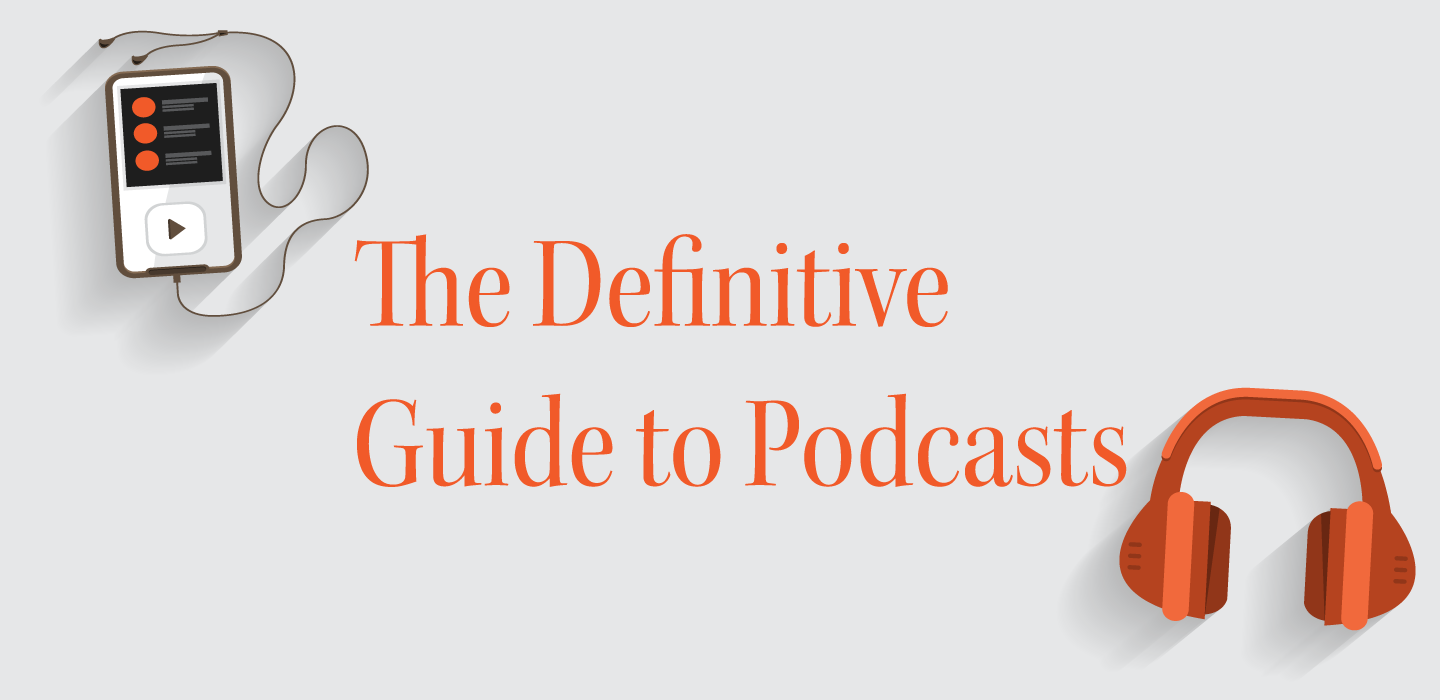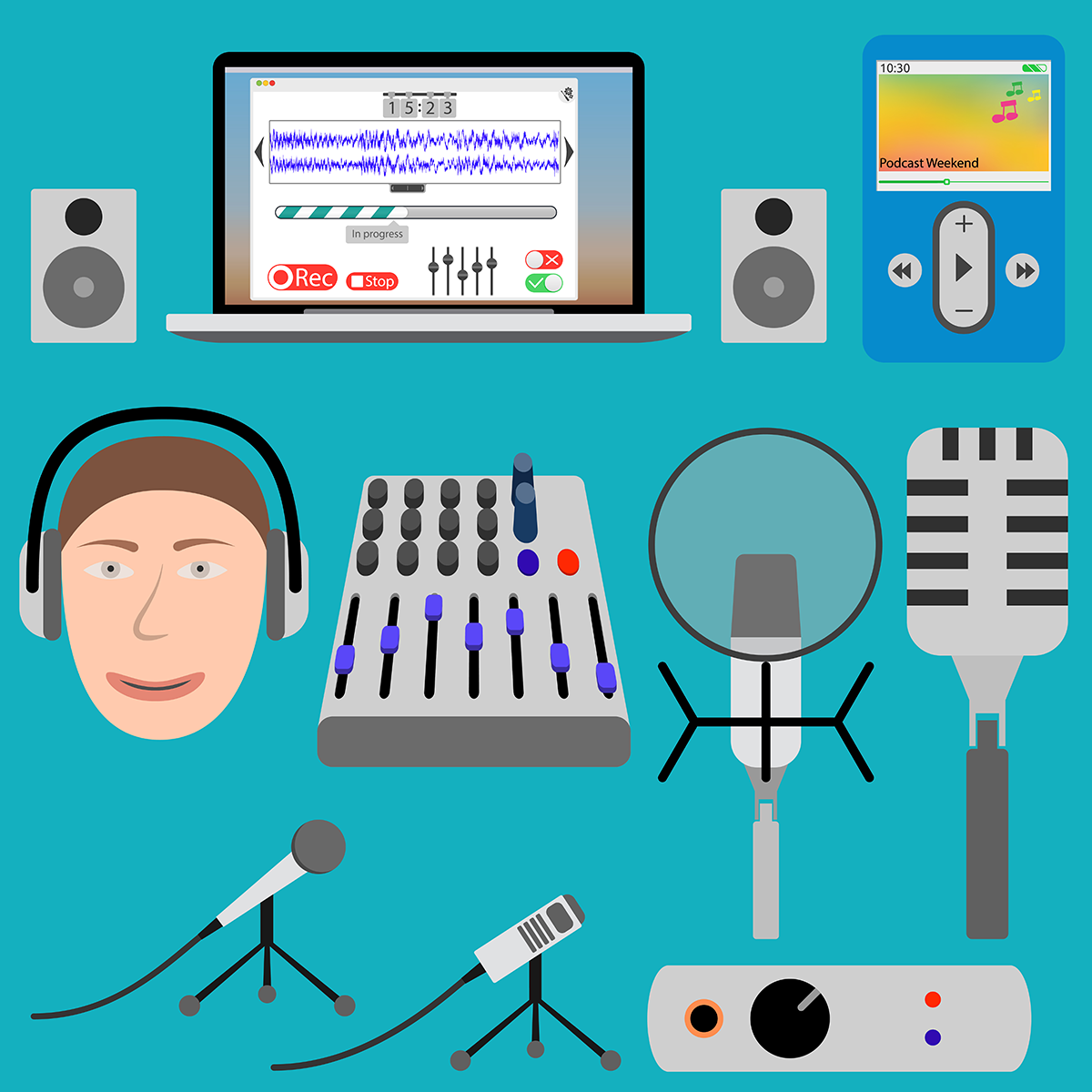
The very improbable has happened: Podcasting has become sexy.
According to Pew Research Center, the increased reach and upward trend line of podcast consumption is evident in every available measure – the percentage of Americans who are listening to podcasts, the level of public awareness and how many podcasts are being hosted and downloaded.
Most people may not have seen this podcast revival coming, but as entrepreneurs and content creators, we absolutely should take advantage of it.
Here’s how Mailchimp Marketing Manager Paul Riismandel puts it:
“The people who listen to podcasts tend to be passionate and have an abiding attachment to what they listen to. The opportunity for brand awareness is tremendous.”
Not only can you generate awareness of your business, you can also communicate company news, show off your expertise, reinforce your relationship with current customers, build a virtual community, demonstrate a need for your product, connect with other people in the industry, and more.
But you’re not reaping any of those benefits without some hard work. Let’s dive into the details of starting a podcast.
Step 1: Pick Your Co-Hosts
It’s pretty hard to be entertaining all by yourself, so we highly recommend you pick up a co-host or two. If you’re a solopreneur, find someone else in your community who also needs exposure. If you’re launching your podcast within your start-up or business, consider bringing on other employees with whom you’ve got a good dynamic.
The most important factors to consider are first, can you talk easily with this person or people, and second, are they willing to set aside the time each week or month to record episodes?
Step 2: Pick a Theme
Once you’ve created your team, it’s time to define exactly what your podcast will cover.
We suggest a theme that’s related to your professional expertise or products; for example, if you offer inbound marketing consultation services to small businesses, you could dedicate your podcast to inbound marketing: best practices, interviews with experts, industry changes, and so on. Think of it this way: what topic will draw in listeners that you can convert to leads?
If you’re still having trouble nailing down a theme, create a Venn diagram. In one circle, list all of the subjects in which you’ve got expertise. In another circle, list all of the subjects your customers care about. Then find where the two overlap: that should be the focus of your podcast.
Step 3: Pick a Format
Next, decide how long each episode will be, how often you’ll release them, and what structure each episode will take.
Before you commit to hour-long episodes, do a practice recording, and see how long you and your co-hosts or guests actually end up talking.
You’ll probably see that it’s difficult to stay on-topic, informative, and entertaining for such an extended period of time. It’s also challenging to come up with enough themes for a longer show.
The takeaway: You should strongly consider beginning with 20 to 30-minute episodes, at least in the beginning. The U.S. Census Bureau says the average commute time is 25.4 minutes, so making your podcast this length means it will slot perfectly into your listeners’ days.
Furthermore, you should probably aim to release one episode a month—at least until you’ve gotten more experience.
Producing podcasts can be time-consuming, and it’s better to underestimate how frequently you can put them out than overestimate and disappoint your audience.
Coming up with a format is also important. It’ll help you stay focused when recording and will give your show consistency.
There’s a couple different formats that tend to do extremely well.
This American Life, a weekly public radio show-turned-podcast with millions of listeners, has popularized the “three acts” arrangement.
The show begins with a compelling story (a.k.a. “the hook”). Host Ira Glass pauses half-way through the hook to explain the episode’s theme. After that, we hear the rest of the hook. Finally, we hear Acts II and III.
Summarized:
- Hook
- Intro
- Second half of the hook
- New story
- New story
Alternatively, you could borrow the lay-out of Inc. Uncensored, a podcast about business and tech.
It’s more straight-forward: The hosts open with a brief explanation of who they are, what the podcast is, who they’ll be interviewing and/or what they’ll be discussing. Then they launch into their first topic. Each episode ends with a round-up of what each host has been into lately.
- Intro
- Topic One
- Topic Two
- Topic Three
- Recommendations
You can adopt what format works best with your preferences, goals, topic, and length. However, you should try to change the format as little as possible. You want your audience members to know exactly what to expect when they hit “play.”
Step 4: Buy Your Equipment

At this point, you’re getting ready to move out of the ideation stage into the actual creation. And unsurprisingly, you’ll need some equipment.
First, you can record using GarageBand (free with Macs), Adobe Audition, or Audacity (also free, and probably your best bet if you have a PC.) These tools are perfect if you and the other people on your podcast will all be in one room when you record.
If you’ll be talking to people in different locations, Skype is a great way to collect everyone’s voices in one place. Just create a group call, then start recording.
(Check out Skype’s list of third party tools for recording your sessions.)
That brings us to microphones.
The Audio-Technica ATR2100-USB Cardioid Dynamic USB/XLR Microphone is one of the most popular “entry-level” mikes. It’s only $59.95, and you can plug it both into a mixer and your computer.
The Blue Microphones Yeti USB Microphone is a more expensive at $89 but offers slightly better quality.
Step 5: Record
Once you’ve gotten your gear, you can finally record. We suggest developing a basic outline before-hand so that you don’t find yourself with nothing to say mid-episode.
What might this look like? It could be as rough as:
J: Introduce guest, plug his new book (1001 Ways to Jumpstart Your Sales Career)
A: Ask guest about book inspiration, writing process, sales technique, etc.
Or you could get more detailed, with something like:
J: I’m excited we get the chance to talk to Jacob Foster, the guy who’s sold more software than anyone I know and the author of 1001 Ways to Jumpstart Your Sales Career. Jacob, how are you doing?
Do whatever you’re comfortable with. Also, if you’re planning on interviewing people, send them questions in advance or give them an idea of what you’ll be asking. These steps will make the actual dialogue as smooth as possible.
While you’re actually recording, don’t worry if there are long silences or someone says something moronic. You can always edit those parts out during post-production.
Step 6: Edit
Which brings us to the next step—editing. Using GarageBand or Audacity, edit your podcast to remove the segments you don’t want, insert audio or music, and get rid of verbal “blemishes” like distracting noises or mike feedback.
Your podcast doesn’t have to be NPR quality. As long as its content is good, your listeners won’t be turned off by the occasional error.
While you may be super excited to put your podcast out there as soon as your first episode is finished, wait until you’ve got at least two or three episodes ready to go.
Having a content archive means that if one week, you have an emergency and you can’t record an episode, you won’t have to let down your audience and risk losing listeners.
Step 7: Publish
Now you can finally release your podcast. There are many ways to get your podcast out there, but the simplest is paying for a podcast host.
Essentially, rather than putting your podcasts on your own site, buying a host allows you to use someone else’s platform. Not only does the service come with lots of automation (such as instantaneous uploads to the iTunes store), but it also ensures people will be able to quickly and safely download your podcast.
Popular podcast media hosts include Libsyn (starting at $5 a month) and Blubrry (starting at $12 a month).
Blubrry has better analytics, so if you’re going to be spending a lot of time digging into who’s downloaded your episodes, when they downloaded them, and from what platform, Blubrry is the way to go.
If you don’t want to pay for a service, Buzzsprout has a free plan. However, you can only upload two hours of audio per month, and your content will only be available for download for 90 days.
Soundcloud is another free option. The site’s podcasting features are still in beta mode, so the platform isn’t without its issues. But to make up for that, you’ll get access to analytics, embeddable media players, and even audience interaction.
As you can see, creating, launching, and maintaining a successful podcast involves just a little more work than speaking into your iPhone’s Memo app for half an hour. But we think you’ll find the results are worth it.
Aja Frost is a writer, tech/design geek, and podcast addict. Check out her site or say hi on Twitter.

